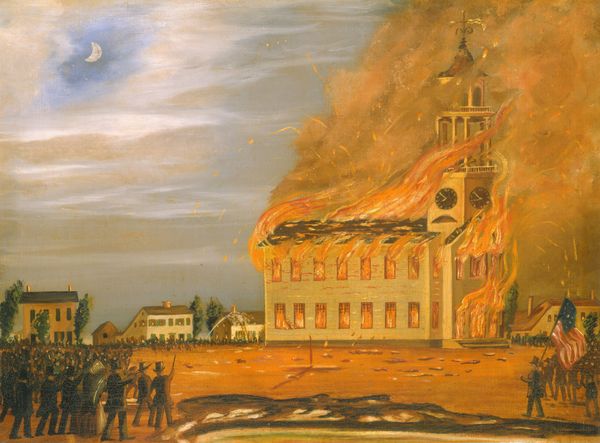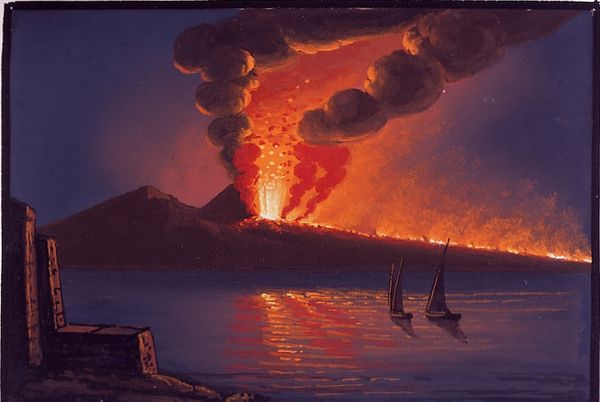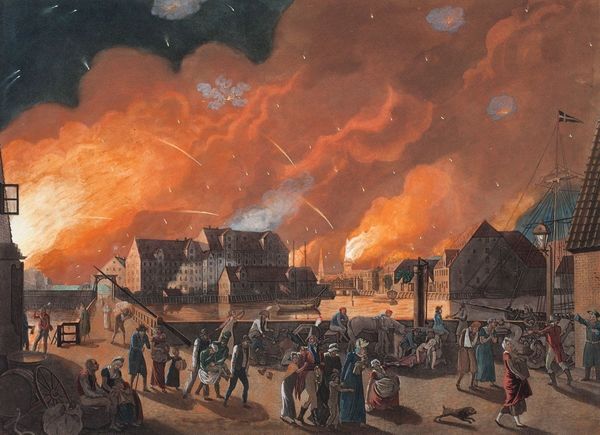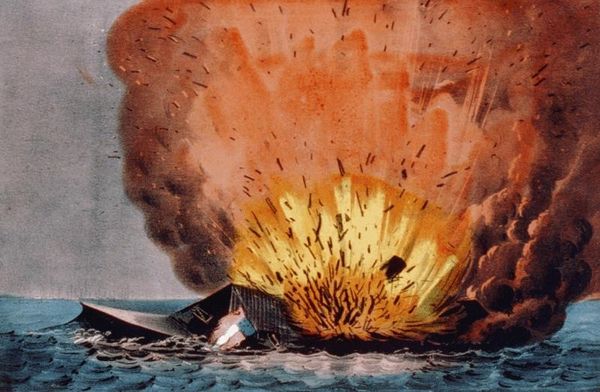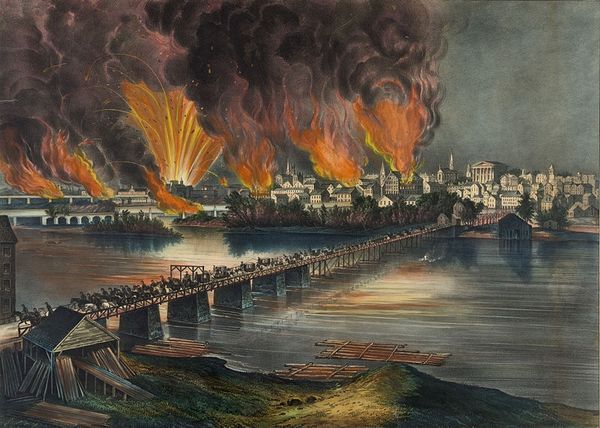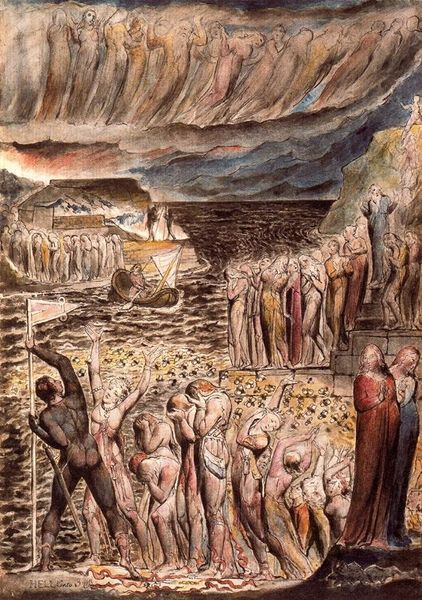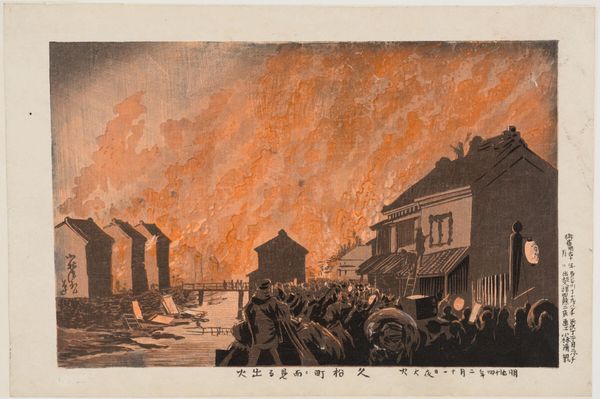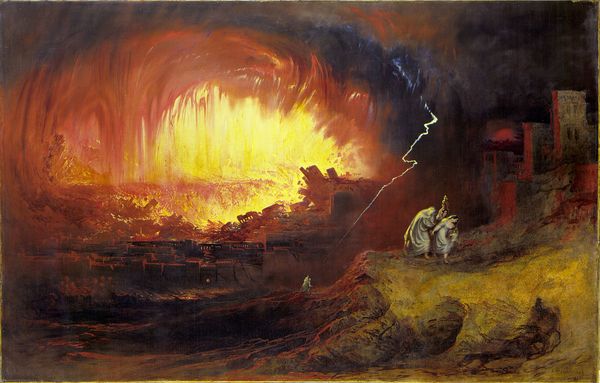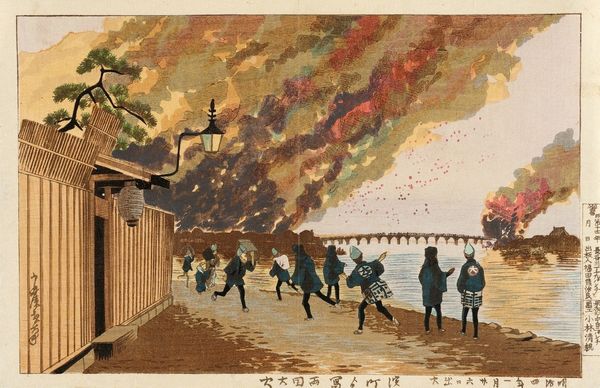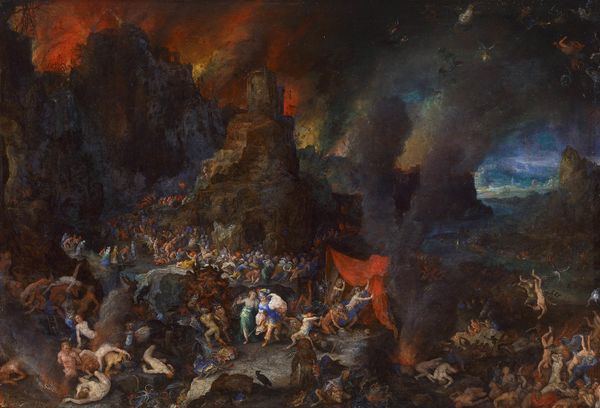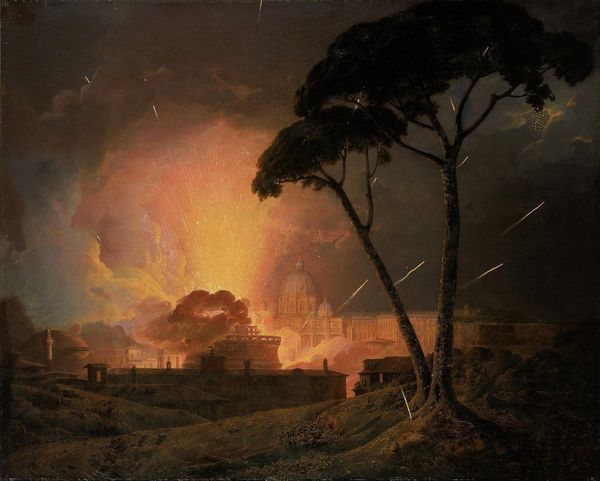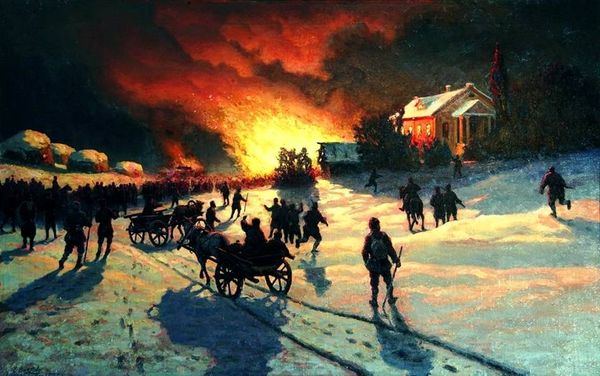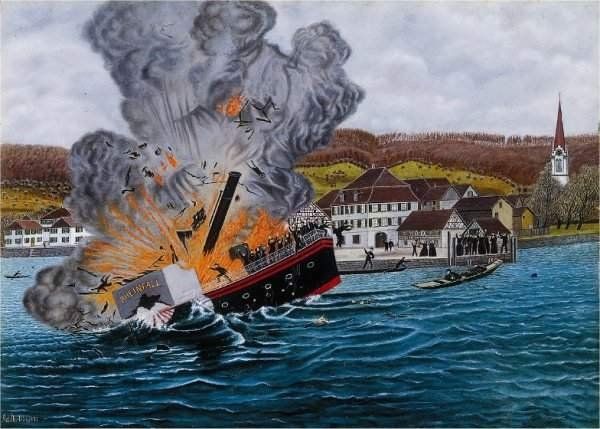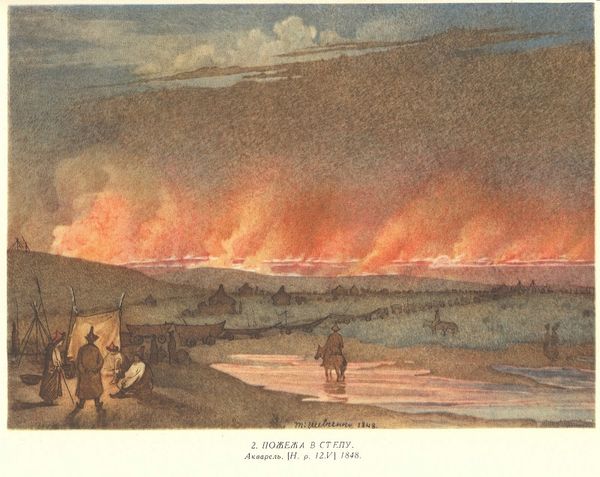
painting, watercolor
#
painting
#
landscape
#
oil painting
#
watercolor
#
genre-painting
#
history-painting
#
watercolor
Copyright: Charles E. Burchfield,Fair Use
Curator: Look at this dramatic scene. It’s Charles Burchfield's "Pyramid of Fire," executed in 1929 with watercolor. It's like witnessing a moment suspended in time. What’s your first take? Editor: Visually chaotic, isn't it? The frantic energy! The layering of the watercolor gives the fire such volume. The textures feel rough, almost tangible like you could feel the heat emanating from it. Curator: The pyramid shape is important here, isn’t it? It alludes to destruction but also a terrible beauty, perhaps referencing ancient funeral pyres or cataclysmic events rendered across time. The symbolic weight! Burchfield frequently uses such geometries to express hidden cosmic order, even in the face of chaos. Editor: The limited color palette really emphasizes that chaotic element though, don't you think? Browns and muted reds everywhere. And that sharp contrast between the darker foreground figures against the brightness of the conflagration pulls your eye straight to the destructive element. Almost Baroque. Curator: Precisely. The silhouettes of the spectators, anonymous and vaguely terrified, amplify that idea, speaking to a shared experience and cultural memory around loss and disaster. Burchfield captures more than just a literal fire; it’s about community trauma. The almost folk-art handling lends to that sense of communal experience, wouldn't you agree? Editor: I do. The flat application, visible strokes, it lends a somewhat naïve look— though the intentional composition completely undercuts the notion. Burchfield wields that perceived naivety to lure the viewer into this dramatic composition, drawing us towards the blazing structure at its heart. Curator: These paintings mark an evolution for Burchfield. He was fascinated by portraying raw human emotions within natural forms; this transition feels almost cathartic, capturing these sentiments directly onto paper through such dramatic scenes. Editor: Indeed. Analyzing the use of such limited form creates the real depth; despite a chaotic theme, it gives it structural simplicity that is so clever and makes it engaging. Curator: Seeing beyond simple appearances really does open doors to a whole universe of meaning doesn’t it? It shows that art holds layers of history waiting to be unearthed! Editor: I agree. It just reveals the careful craft behind that rawness—how much that heightens emotional experience for us as observers.
Comments
No comments
Be the first to comment and join the conversation on the ultimate creative platform.
